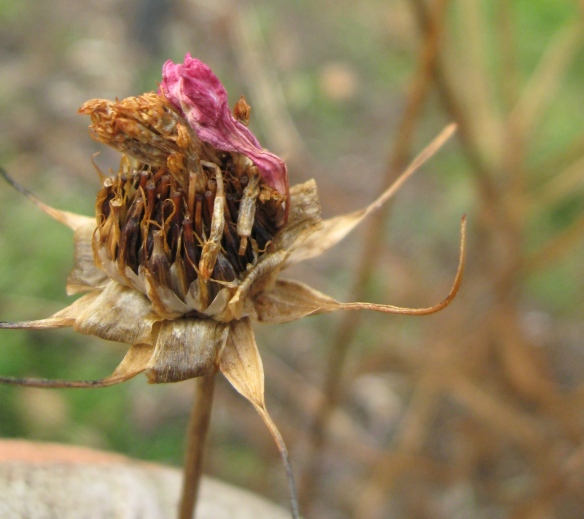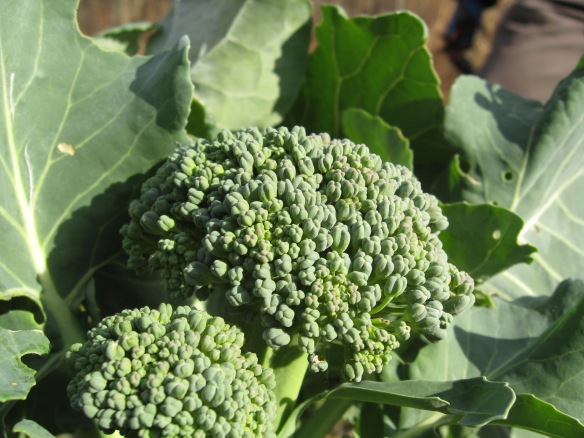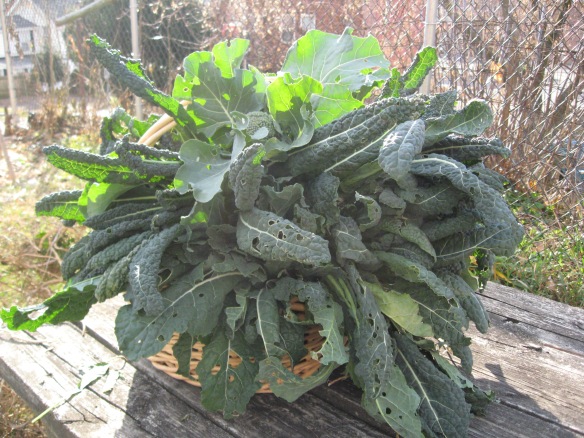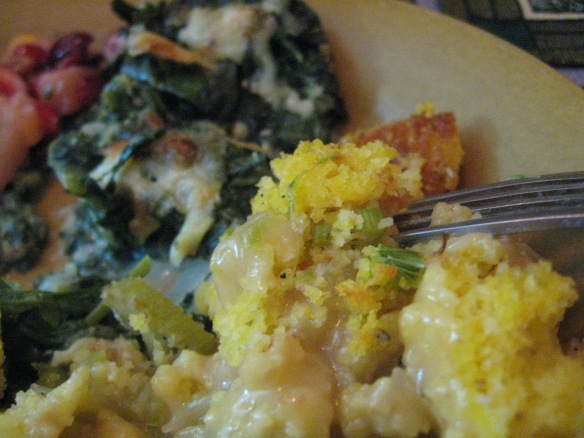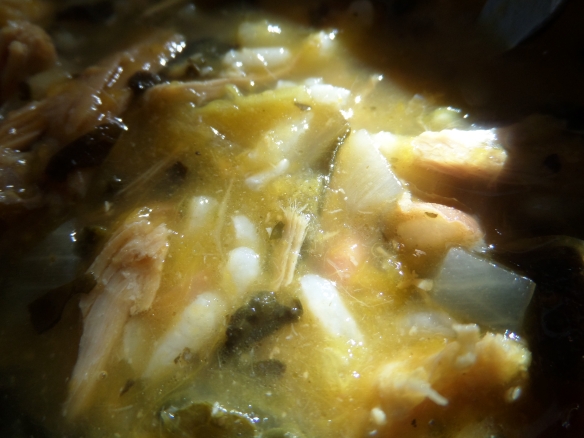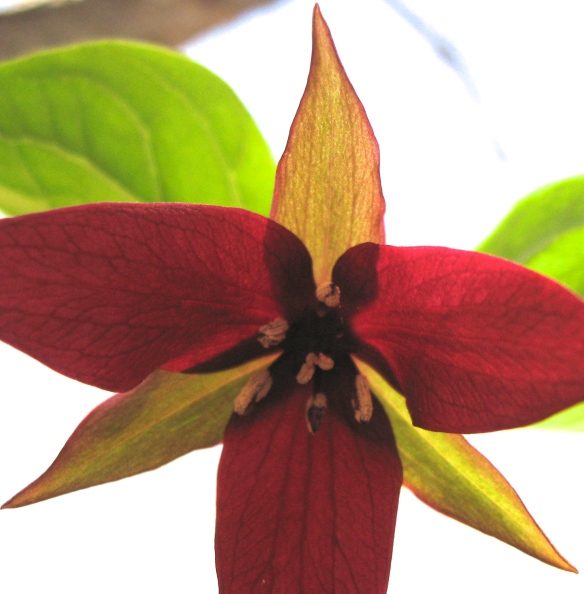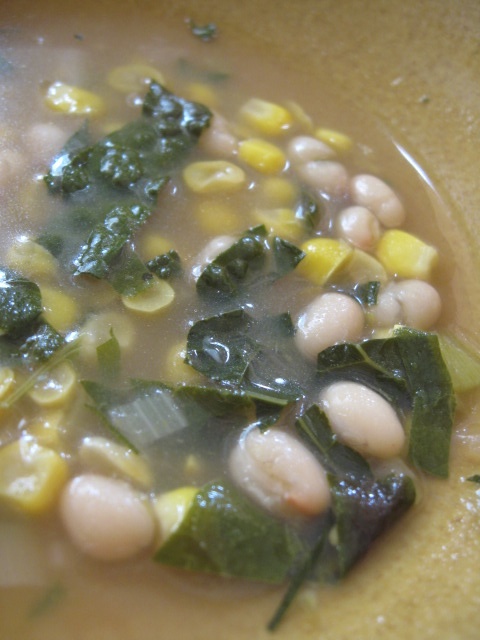
Dahlia readying to bloom.
This spring of 2016 has been a little strange—and it’s not just the weather.
In the cold days of February I did not venture to the beautiful new Capital Roots Grow Center to dig through bins of donated seeds.
In March, I did not plan out sections for chard, arugula, carrots, blue borage—or any novel plants, either.
I did not go to the April workday at my little plot; in fact, I did not even pencil the date into my calendar.
This spring, after six years, I am taking a sabbatical from Community Gardening.
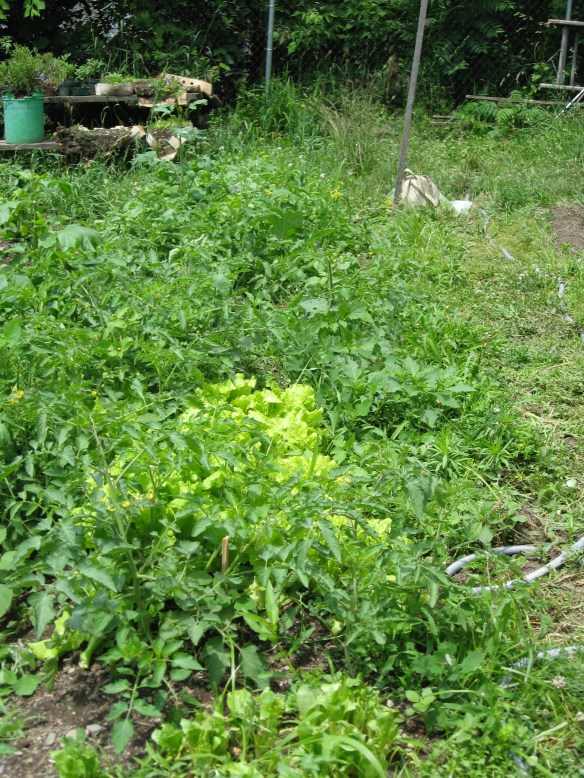
My first community garden plot, in 2010. You can spy arugula, chives, tomato plants, butter crisp lettuce–and a hose–amongst the horrendous weeds. I had a lot to learn.
***
I call the time off gardening a sabbatical because, like a traditional academic sabbatical, this seventh season will concentrate on studied time outside of my usual setting. A pause enables me to focus on other things and will include a little required travel. Whenever I might return to community gardening, it will be with a refreshed perspective.
In particular, I am beginning a six-month Forest Therapy* certification in May. During the time I would have spent digging up my plot, fencing, planting and weeding, I’ll be reading about relationships between natural experiences and human health, learning our local ecosystems in more depth, taking a seven day intensive course, sitting under the forest canopy, and leading guided meditation walks.
Beforehand, I’ve started with a series of classes about wild edible plants. They are led by Dave Muska of Ondatra Adventures, and held up at Dyken Pond Environmental Education Center.
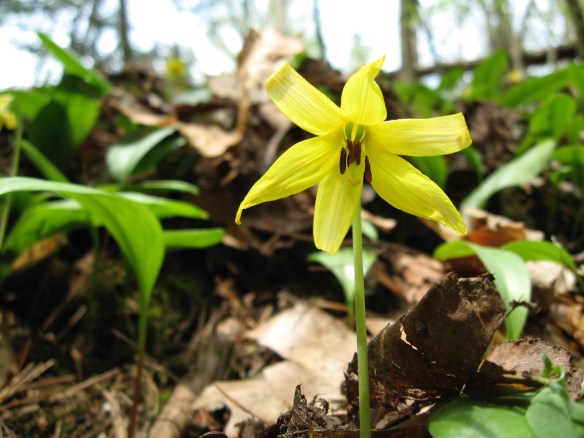
For example, I now know that these trout lilies have edible leaves and bulbs, though proper plant identification and sustainable harvesting techniques are required before ingesting.
***
This summer I also want to finish dozens of pieces of writing about the garden, and about my life. In addition, I am wrestling with three book manuscripts stuck at various stages (hence the increasingly intermittent posting here on the blog). Finally, I anticipate moving into the world of the day-job very soon.
The richness of the outdoor life not only grounds me, it can distract as well. There is always more to do, more to experience.
Strange as it sounds to say, in order to focus on the beauty and meaning of the natural world, I have to decrease the amount of input. Or at least choose which forms I can take in right now.
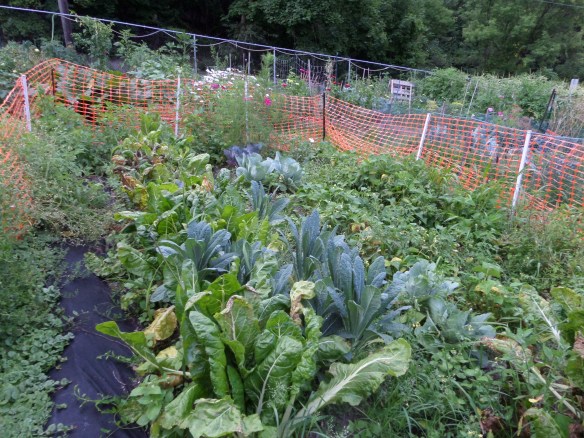
On the hill, a much more organized and bountiful garden, 2014. (Still more weedy than I would prefer.)
***
I have very mixed feelings about the sabbatical, like any choice to step away from a beloved activity.
Community gardening is part of how I have defined my summer life and myself, since I moved to upstate New York. It’s felt intrinsic to the new life I have created. My plan, therefore, is to pay attention and be open to how it feels to NOT work this garden.
I ask questions.
What emotions do I feel? Where do they come from? What do I miss?
What do I NOT miss? (Aside from woodchucks.)
How do I get out in the dewy world of early morning sun, that feeds me so well?
How do I meet my body’s craving for hands and knees in soil?
What other repetitive jobs do I find meditative and soothing?
I sit with my thoughts, long and patiently. As I have learned to do with my writing–let them steep like tea, simmer like soup, rise like dough.
Then the meaning behind the meaning has a chance to show its shy self to me.

One beautiful sweet pepper, ripened to red in its own good time.
***
Some questions we can all ponder:
What feeds you?
Which are the “bare minimum” self-care activities that you know you need?
What do you want to leave —and just be done with already?
What do you desire to take a sabbatical from?
What would you concentrate on if you did?

End of season plum tomatoes, ripening in the kitchen, 2015.
****
*Forest Therapy is a research-based framework for supporting healing and wellness through immersion in forests and other natural environments. In Japan it is called “shinrin yoku,” which translates to “forest bathing.” I will be leading some meditation walks, required for my training, in the summer and fall so if anyone is interested, information will be available on my business blog. More information about Forest Therapy is at shinrin-yoku.org

